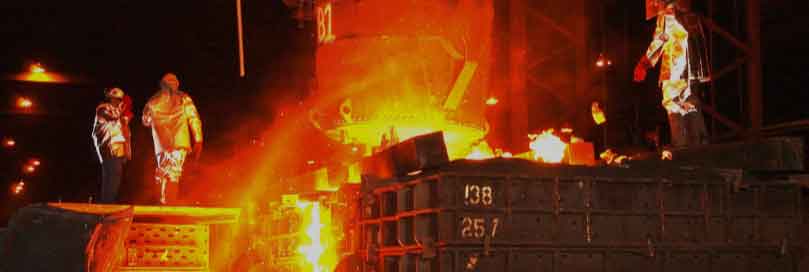
Centrifugal casting is a casting method that utilizes centrifugal force to produce cylindrical-shaped parts. Let’s compare centrifugal casting with other commonly used casting methods:
- Centrifugal Casting vs. Sand Casting:
- Strengths of Centrifugal Casting: Centrifugal casting offers improved density and grain structure due to the centrifugal force, resulting in enhanced mechanical properties of the castings. It is particularly suitable for producing cylindrical or tubular-shaped parts. Centrifugal casting can achieve good surface finish and can accommodate a wide range of materials, including both ferrous and non-ferrous alloys.
- Limitations of Centrifugal Casting: Centrifugal casting may have limitations in casting more complex shapes with intricate internal features. It may not be as suitable for producing flat or plate-like parts. The tooling and setup costs for centrifugal casting can be higher compared to sand casting.
- Centrifugal Casting vs. Die Casting:
- Strengths of Centrifugal Casting: Centrifugal casting offers improved mechanical properties and denser castings compared to die casting. It is suitable for producing cylindrical or tubular-shaped parts with excellent structural integrity. Centrifugal casting can accommodate a wide range of materials, including both ferrous and non-ferrous alloys.
- Limitations of Centrifugal Casting: Centrifugal casting may have limitations in producing more complex shapes with intricate internal features. It is generally not as suitable for producing smaller, intricate parts like those commonly produced in die casting. The tooling and setup costs for centrifugal casting can be higher compared to die casting.
- Centrifugal Casting vs. Lost Wax Casting:
- Strengths of Centrifugal Casting: Centrifugal casting is particularly suitable for producing cylindrical or tubular-shaped parts with improved mechanical properties and denser castings. It can achieve good surface finish and can accommodate a wide range of materials, including both ferrous and non-ferrous alloys.
- Limitations of Centrifugal Casting: Centrifugal casting may have limitations in casting more complex shapes with intricate internal features. It is not as suitable for producing fine, detailed parts like those commonly produced in lost wax casting. The tooling and setup costs for centrifugal casting can be higher compared to lost wax casting.
- Centrifugal Casting vs. Permanent Mold Casting:
- Strengths of Centrifugal Casting: Centrifugal casting offers improved mechanical properties and denser castings compared to permanent mold casting. It is suitable for producing cylindrical or tubular-shaped parts with excellent structural integrity. Centrifugal casting can accommodate a wide range of materials, including both ferrous and non-ferrous alloys.
- Limitations of Centrifugal Casting: Centrifugal casting may have limitations in casting more complex shapes with intricate internal features. It is generally not as suitable for producing smaller, intricate parts like those commonly produced in permanent mold casting. The tooling and setup costs for centrifugal casting can be higher compared to permanent mold casting.
When selecting the appropriate casting method, consider factors such as part shape, size, complexity, material requirements, mechanical properties, surface finish, production volume, and cost considerations. Each casting method has its own strengths and limitations, and the choice depends on the specific requirements of the casting project.
